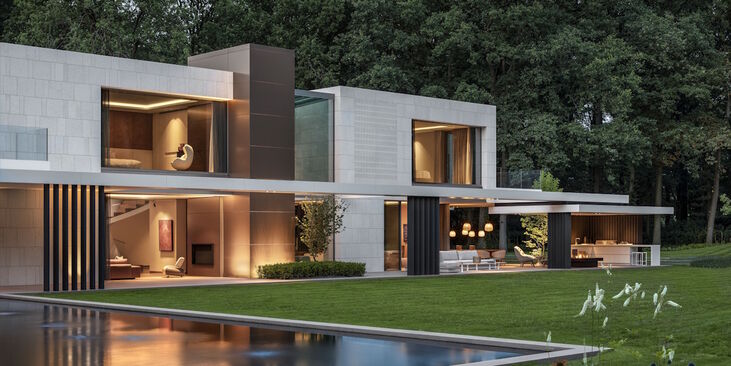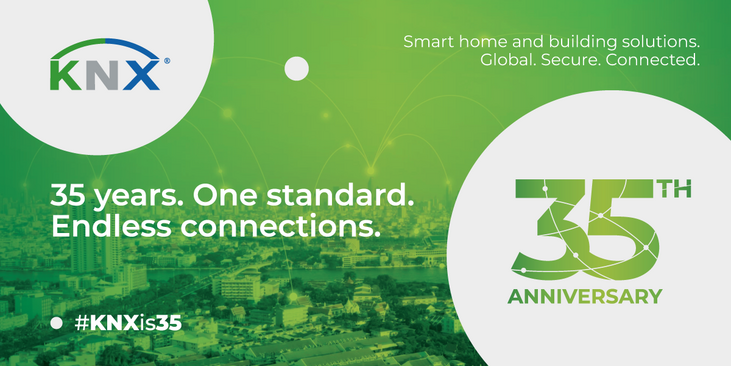24. Nov 2020
2020 KNX Award Special Winner: The Smart Living Lab

For the past ten years, the University of Applied Sciences in Vienna, Austria, has been researching and teaching in the field of smart homes and active assistive living (AAL) technologies. In May 2019, we opened the Smart Living Lab, which covers an area of 250m² consisting of a living area, a cooking space, a bathroom, a sleeping space and a lecture room. The aim of the lab is to find new ways to make smart homes easy to control for people with disabilities. This project is the winner of the 2020 KNX Awards category for Special.
The brief
The brief was to provide an environment to allow researchers and students to use state-of-the-art smart home technology and assistive technologies for activities such as user tests with disabled people, and testing and integrating new technologies to provide enhanced usability and energy efficiency.
Solution
To start with, the lab was equipped with typical entertainment components such as TV, radio and DVD player, as well as kitchen devices such as a smart fridge and a smart oven. The lab was then also equipped with eye trackers, lip mice and voice control, allowing disabled people to interact with tablets or PCs. KNX devices were included to control lighting, HVAC, blinds, security and safety devices and provide visualisation possibilities.
The use of many different technologies for a variety of functions is still a challenge within the lab, and whenever possible, we integrate devices by using gateways to the KNX system. The KNX standard then allows us to integrate these different functions into a single system, providing a clear user interface and control of the environment. Where no gateway to KNX exists, openHAB comes into place. It allows to perform automation tasks, timed and logical functions in a vendor- and technology- agnostic open-source way.
Installation
The ideas for the lab evolved in 2017, and the actual planning started early in 2018 based on years of experience in research and teaching AAL at the university. First, the room concept had to be completed. The aim was to have an open space that was not only suitable for lectures and presentations with up to 20 participants, but also for project work in a typical home environment. Components were then selected deliberately from many different vendors in order to demonstrate the integration possibilities of KNX.
Students then had the opportunity within their regular 5th-semester courses to support the project through ETS commissioning and physical address programming. The devices were then installed by the different sponsor companies. During the test phase, the commissioning was adapted and improved, to better suit the needs of the people working there. The automated rules in particular, had to be adapted as well as user interface issues to fix the fact that too many features had initially been presented to the user. Due to the flexibility of KNX, these issues could be fixed during operation, and also upcoming IT security aspects, such as secure remote access, could be integrated at a later date.
Since the winter semester of 2019, the lab has been heavily used for teaching courses with respect to KNX and smart homes. In addition, around 30 students have already been able to use the lab within their KNX-related projects and bachelor theses. The use of KNX in the lab has also helped to support disabled clients, who have been able to test the control of the environment and help our researchers to develop suitable assistive technologies.
The benefits of using KNX
Home control functionality for people requiring assistance requires a broad range of technology that can be continually adapted. KNX is ideal for this, as it gives us the flexibility to mix and match devices from different manufacturers seamlessly, whilst also being able to integrate non-KNX devices and keep everything under the control of a clear user interface. Using one commissioning tool, namely ETS, also gives us the possibility of continually improving our solutions easily and remaining open to future developments.
Equipment list
Manufacturers: ABB, Berker, Busch-Jaeger, ekey, euro unitech, Hager, Jung, Merten, Netx Automation, Schneider Electric, Siblik, Siemens, Somfy, Theben.
Technology: Touch controllers with temperature, humidity and CO2 measurement.Room controllers.Touch panels.Fingerprint scanners.Switching and blinds actuators.Presence detectors.Pushbutton interfaces.EnOcean/KNX gateway.NETxAutomation BMS.Smart meter.A1 Smart Home System.Dyson Pure Cool Tower.Fibaro wireless components such as flood or smoke sensors, universal inputs for step mats.E-Steiermark Homee system. Liebherr refrigerator.Weinzierl KNX RF/TP coupler.DALI electronic ballasts for lighting control.Bosch kitchen appliances.NUKI door opener system.RECORD automatic door opener.AV components from Yamaha, Panasonic, Sonos and Klipsch. Voice controls from Amazon (Echo, Echo Show) and Google (Home).Tablets (Android and iPad) for control.GUI integration with OpenHab. Custom GUIs or barrier-free user interfaces via AsTeRICS and AsTeRICSGrid.
Project: The Smart Living Lab
A project by: FH Technikum Wien
Contact: Friedrich Praus
Highlights
-
 Press
PressETS6 Roadshow 2025 marks global success, showcases power of ETS6.3
ETS6 takes center stage during the month of May with 24 roadshow stops all over the world. -
 News
NewsThe KNX Journal 2025 is now available
The latest edition of our annual smart home and building solutions magazine has arrived. The KNX Journal 2025 offers ... -
 KNXtoday
KNXtoday#KNXis35: KNX history and evolution
KNX is 35. This worldwide building control standard, initiated by a handful of visionary European manufacturers, now has ...
